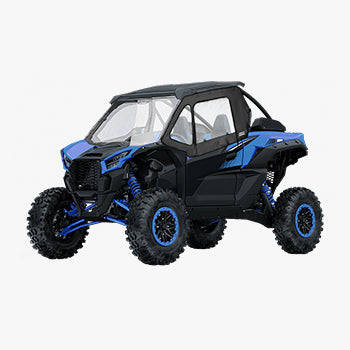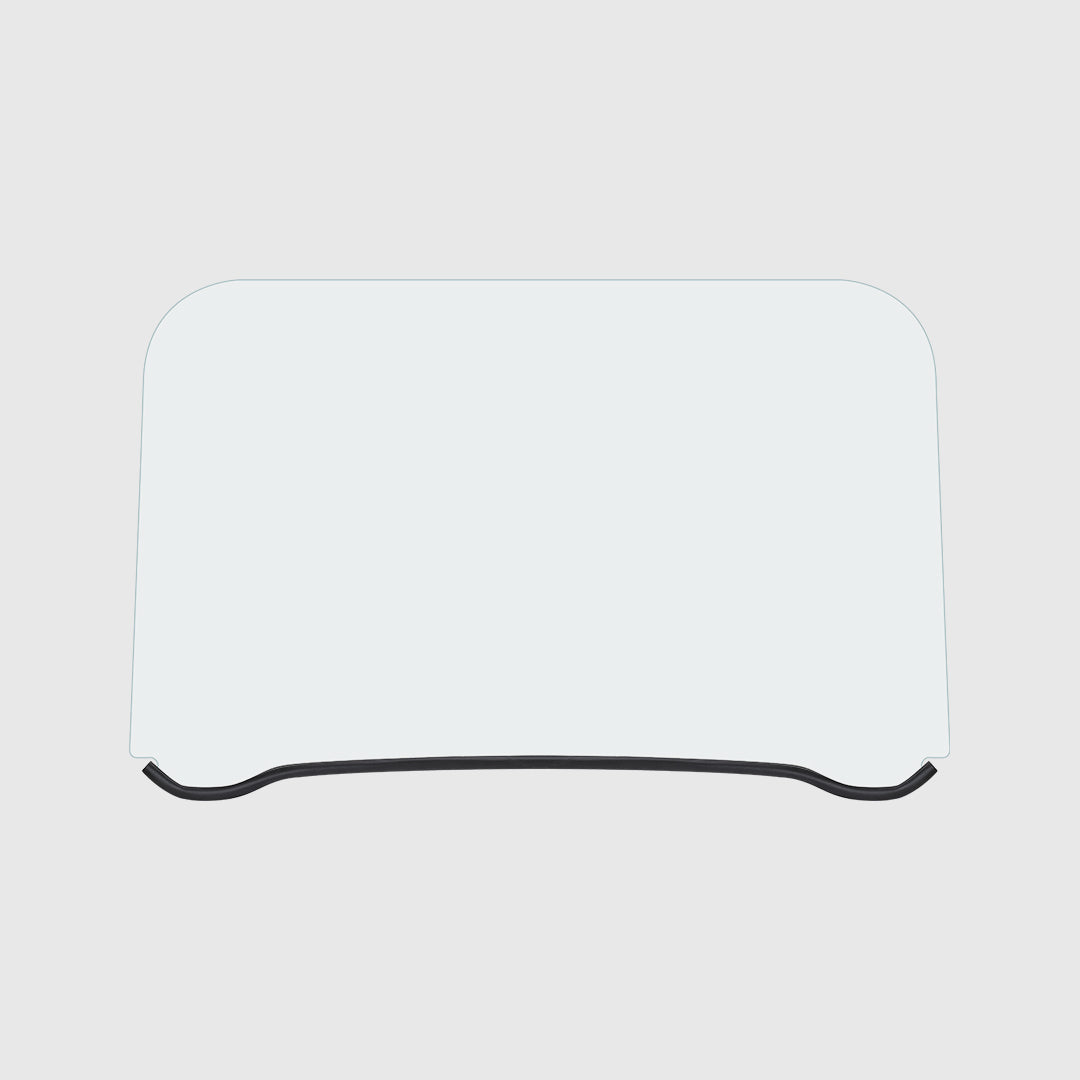All Aboard! Your Complete Guide to Boat Fender: Types, Sizes, Usage, and More

Whether you're a seasoned sailor or just starting your nautical adventures, knowing about boat fenders is critical for protecting your vessel from damage. Today, we're diving deep into the world of boat fenders, exploring the various types, sizes, and crucial insights on when to use them effectively.
Read on and explore!
What Are Boat Fenders? And What Are They Used For?

Boat fenders, also known as marine fenders or bumpers, are essential accessories designed to protect a boat's hull from damage when docking alongside piers, wharves, and other boats. They act as a cushion that absorbs shock and prevents scratches, dents, or structural damage.
Typically hung or attached to the side of the boat, boat fenders play an essential role in maintaining the integrity and appearance of a boat's exterior. This helps extend its lifespan and preserve its value. Utilizing boat fenders properly is a basic yet vital aspect of effective boat maintenance and safety practices.
Why Are Boat Fenders Important?
Think about approaching a dock without any protection on the side of your boat. The hard surface of the dock could easily scratch or dent your boat's exterior, potentially leading to expensive repairs. Boat fenders are your first line of defense against such incidents, preserving both the beauty and integrity of your vessel.
Do I Need Boat Fenders?
Boat fenders are a crucial investment for any boat owner. Whether you have a small fishing boat or a large yacht, boat fenders play a vital role in protecting your vessel from damage while docking or mooring alongside other boats. They act as a buffer, absorbing impacts and preventing scratches, dents, or more severe structural damage to the boat's hull.
Without fenders, your boat is susceptible to costly repairs and diminished value over time. Therefore, having a set of durable boat fenders can save you money and keep your boat in top condition, ensuring it remains secure and well-maintained in various marine environments.
Best Boat Fenders at Kemimoto: EVA Boat Fenders
Kemimoto's innovative EVA boat fender boasts a clever and handy locking mechanism that ensures it stays securely in place, preventing drift. This flat fender is exceptionally resilient and flexible, offering excellent shock absorption. Additionally, it’s lightweight and easy to handle, making it an ideal choice for any boater.
Our latest EVA fender is built to endure extreme cold, handling temperatures as low as -70°C without any problems. It’s also resistant to chemicals, corrosion, and bacteria while being eco-friendly. Disposal is planet-safe. We're serious about innovation and setting new industry standards. Feel at ease with Kemimoto’s complete boat gear collection!
What Are Boat Fenders Made Of?
Boat fenders are made from tough materials that can really take a hit and last a long time. They're designed to soak up the bumps and knocks effectively when docking. Typically, you'll find boat fenders made out of sturdy materials like:
1. Vinyl: Vinyl is popular due to its UV resistance and ease of cleaning. Vinyl boat fenders are versatile, available in many colors, and hold up well under sun exposure. However, they can become stiff in cold weather and are more susceptible to punctures compared to rubber.
2. Foam: Foam is extremely lightweight and often inflatable but may lack long-term durability and UV resistance. Foam fenders are easy to move and adjust. However, they are less durable and can absorb water if punctured, which affects their buoyancy and effectiveness.
3. EVA: EVA boat fenders are a kind of foam fender that is awesome for its toughness and lightweight feel. They’re super durable, resist UV damage and cracking well, and don’t deflate. Whether you have bass boats, sailing dinghies, yachts, etc., EVA boat fenders are perfect if you're looking for reliable protection with minimal maintenance!

4. PVC: PVC boat fenders are durable and affordable. They're lightweight, easy to clean, and available in various sizes and colors. However, PVC may be less flexible in cold weather and can be prone to punctures. Additionally, they might degrade under prolonged UV exposure. Overall, PVC fenders offer cost-effective protection ideal for casual boaters.
5. Rubber: Known for durability, rubber fenders offer excellent shock absorption and resilience. However, rubber fenders can be heavy and bulkier than other types, making them difficult to handle and store.
Boat Fenders Types
There are different types of fenders for ships, including round, cylindrical, flat, hybrid designs, etc. Each design serves different dock configurations and hull types.
The most common type, cylindrical fenders, are versatile and straightforward in design. They can be hung vertically or horizontally, depending on your docking situation. These are suitable for most leisure boats and come in various sizes.
Round fenders, or ball fenders, are perfect for boats that roll heavily at the dock or are exposed to significant waves. Their spherical shape provides all-around protection, making them ideal for larger vessels such as cruisers.
Commonly used for large ships and in commercial applications, these are air-filled for high energy absorption and low reaction force.
Highly efficient and very durable, cell fenders offer great energy absorption capability. They have a cylindrical shape and are commonly used in oil and LNG facilities with large vessel sizes.
Offering one of the highest energy absorption capacities among fenders, cone fenders are highly efficient. Their conical shape allows them to deflect more than other types while maintaining high energy absorption. They're suitable for both large and small vessels.
Flat fenders are relatively newer in the market and are appreciated for their versatility and ease of storage. Flat fenders can be deflated when not in use, making them perfect for small boats with limited storage space.
Designed specifically for the bow and stern, these fenders cater to the unique needs of these areas of a boat. They are particularly useful for boats with sharp bows.
Designed for the stern area, this help protect your boat’s transom when reversing into a dock.
Perfect for protecting the vulnerable corners on marinas or docks.
Known for their simplicity and durability, arch fenders are widely used due to their ability to withstand heavy use. They feature a curved surface and are often employed in places with stringent space restrictions.
This category includes fenders designed for specific purposes, such as pontoon fenders, which protect the delicate aluminum rails and pontoons on pontoon boats, or transom fenders, tailored to guard the transom area of ski and bass boats.
What Size Boat Fenders Do I Need?

Too large boat fenders are harder to store and manage, especially on smaller vessels, and can impede the docking process by preventing the boat from getting close enough to the dock. Too small, and the fender won't provide adequate protection.
Here's a simple guideline for selecting the right size:
-
Boat Length: Generally, you should have one inch of fender diameter for every four to five feet of boat length. For instance, a 20-foot boat would require cylindrical fenders that are 4-5 inches in diameter.
-
Hanging Height: Fenders should hang just above the waterline but not so low that they drag underwater.
How Many Boat Fenders Do I Need?
The number of boat fenders you need depends on the length of your boat, the conditions you typically dock in, and how well you want your vessel to be protected.
As a general rule, consider having at least one fender for every 10 feet of boat length. For example, a 20-foot boat should have at least two fenders, whereas a 40-foot boat would benefit from four. However, if you often dock in crowded marinas or in conditions with strong currents or winds, consider using additional fenders to enhance protection。
Boat Fender Size Chart (With Numbers of Fenders)
Here’s a useful boat fender size chart based on the general guidelines to help you determine the right size fenders and how many fenders you should have.
|
Boat Length |
Fender Diameter |
Fender Length |
Recommended Number of Fenders Per Side |
|
Under 10 ft |
3 in |
12 in |
3 |
|
10-20 ft |
4-5 in |
16-18 in |
3-4 |
|
20-30 ft |
6-7 in |
20-24 in |
4-5 |
|
30-40 ft |
8-10 in |
26-30 in |
4-6 |
|
40-50 ft |
10-12 in |
32-36 in |
5-7 |
|
Over 50 ft |
12-15 in |
36-72 in |
6+ |
Consider the docking conditions and adjust your fender types, numbers, and placement accordingly for optimal safety and protection.
When Should I Put Fenders on My Boat?
Knowing when to deploy your fenders is as important as having the right ones. Below are scenarios that highlight proper fender usage:
-
Docking. Knowing when to deploy your fenders is as important as having the right ones. Below are scenarios that highlight proper fender usage:
-
Tying Alongside Another Boat. When mooring next to another boat, ensure that your fenders are placed at points of contact. This is often at varying heights, depending on the hull design and water conditions.
-
Mooring Against High Walls or Piles. Attach fenders whenever you moor your boat, particularly in crowded marinas where waves and movement from other boats can cause collisions.
-
Choppy Conditions. In rough waters, where your boat is likely to sway and bump more aggressively against docks or other boats, having fenders mounted can prevent significant damage.
-
During Storage. If you’re storing your boat in the water at a slip or berth, keep fenders on to protect against any unexpected knocks or bumps, especially in high-traffic areas.
How to Use Boat Fenders?
Here's how to use them effectively:
1. Select the Right Size and Type. Ensure you choose the appropriate fender types and sizes as discussed in the earlier section.
2. Positioning Fenders: Attach the fenders at the widest point of the hull and adjust them so that they hang just above the waterline. Space them evenly along the side of the boat that will come into contact with the dock or another boat.
3. Attaching Fenders: Use ropes, straps, or fender lines to secure the fenders to your boat. Tie the lines to sturdy fixtures like cleats or rails. Ensure the knots are tight and secure.
4. Adjusting Height: Adjust the height of the fenders based on tidal changes and the type of dock (floating or fixed). They should be positioned high enough to protect against the dock yet low enough not to cover any openings or interfere with docking.
5. Use Additional Protection: In windy conditions or rough waters, consider using extra fenders or specialized types like pontoon fenders for added security.
6. Regular Inspection and Adjustment: Regularly check the fenders during docking or when moored for extended periods. Adjust them as needed to ensure they provide maximum protection.
Best Practices for Fender Usage
Follow these tips to maximize the life and effectiveness of your boat fenders:
-
Proper Inflation: Over-inflated fenders are less effective at absorbing impacts and more likely to burst. Under-inflated fenders, meanwhile, fail to provide adequate protection. However, if you use EVA boat fenders, there’s no need to inflate or deflate as it can effectively absorb impacts and protect your boat.
-
Regular Cleaning: Keep fenders clean to avoid transferring dirt or debris onto your boat’s finish. Wash them regularly with soap and water.
-
Inspection and Replacement: Check fenders periodically for wear and tear. If a fender becomes severely damaged, replace it immediately to ensure continuous protection.
-
Correct Storage: When not in use, store fenders in a dry, cool place away from direct sunlight to prevent degradation.
Final Thoughts

In conclusion, understanding the different types, sizes, and proper usage of boat fenders is essential for every boat owner. Investing in high-quality fenders from trusted brands like Kemimoto ensures your vessel remains protected from costly damages while docking or mooring.
Remember to select the right size and type for your boat, position them correctly, and maintain them through regular cleaning and inspection. Whether you're navigating choppy waters or enjoying a calm marina, well-placed boat fenders will safeguard your boat's integrity and appearance.
Protect your investment and enjoy peace of mind on every voyage with the right boat fenders. For more expert advice and top-notch and easy-to-use boat gear, visit Kemimoto's comprehensive collection today. Happy sailing!
FAQs
1. What Is the Difference Between a Boat Fender and a Bumper?
Though often used interchangeably, Bumper and Fender have distinct meanings. Boat Bumpers are installed on the dock, while Boat Fenders are attached directly to the boat.
2. How to Measure the Size of a Boat Fender?
First, consider your boat's length and weight. Generally, fenders should be 1 inch in diameter for every 4-5 feet of boat length. Then, measure the height to ensure it properly covers the boat’s hull side. Don't forget to account for docking conditions too!
3. What Size Fenders for a 34-Foot Boat?
For a 34-foot boat, you'll typically need fenders that are at least 8.5 inches in diameter and around 26 inches long to ensure proper protection while docking.
4. How Many Fenders for a 23-Foot and a 20-Foot Boat?
For a 23-foot boat, you’ll generally need three to four fenders. For a 20-foot boat, you typically need at least three fenders.
5. Where Is the Best Placement for Boat Fenders?
The best placement for boat fenders is along the widest part of your boat, ensuring they’re evenly spaced. Position fenders just above the waterline to protect against dock and boat contact, including at the bow and stern for optimal protection while docking. Adjust their height as needed based on dock conditions.
6. How to Tie Bumpers to a Boat Cleat
To tie bumpers to a boat cleat, use a simple clove hitch knot. Loop the fender line around the cleat twice, crossing over in an "X" shape. Ensure it's snug and secure. Adjust the fender's height as needed to provide optimal protection while docking or rafting.
7. How to Attach Boat Fenders to the Dock
Use strong ropes or fender lines to attach boat fenders to the dock. Securely tie the fenders to dock cleats or pilings at water level height. Ensure they’re evenly spaced and adjust their positions to shield your boat from contact with the dock, providing optimal protection while mooring.













Dejar un comentario